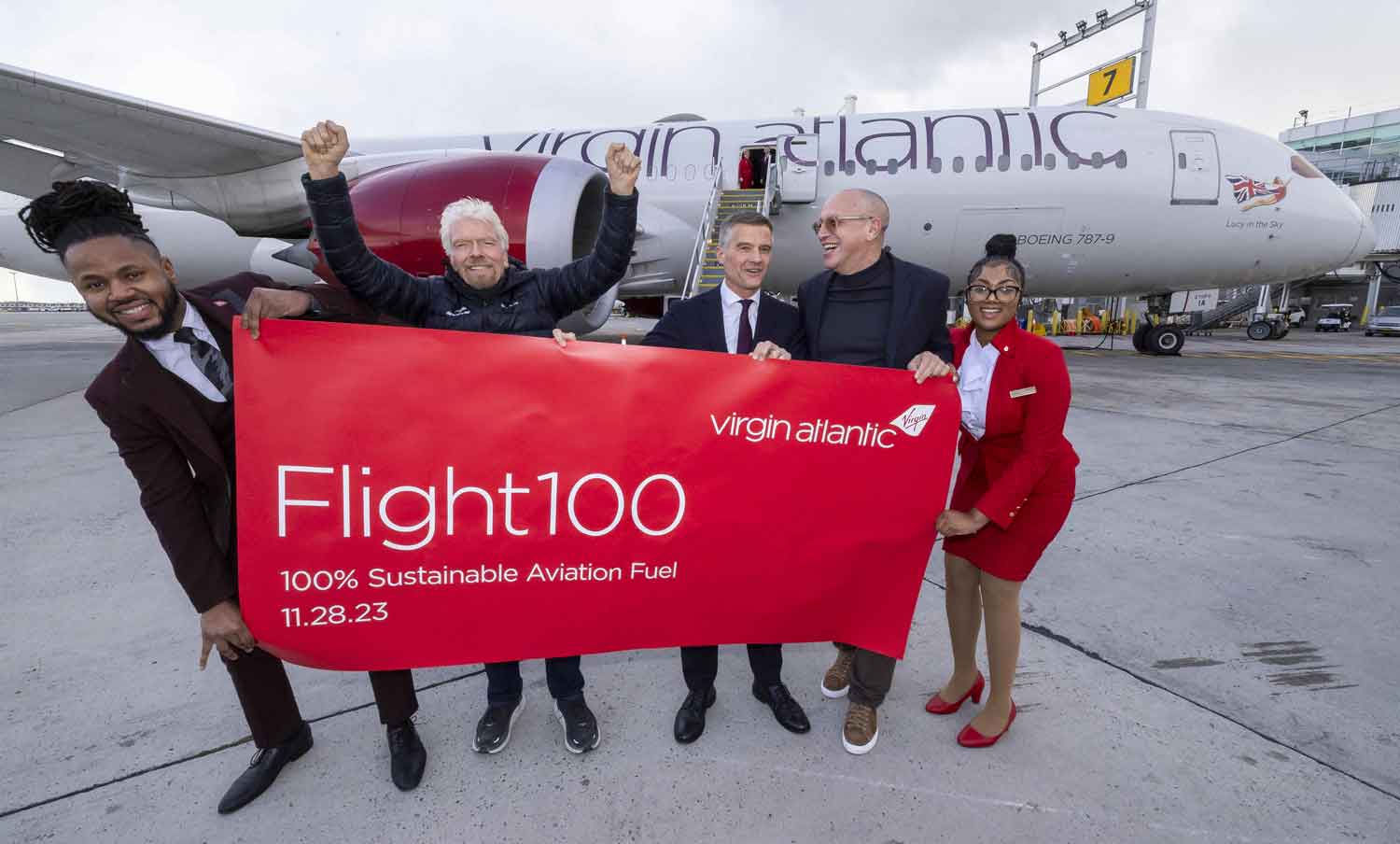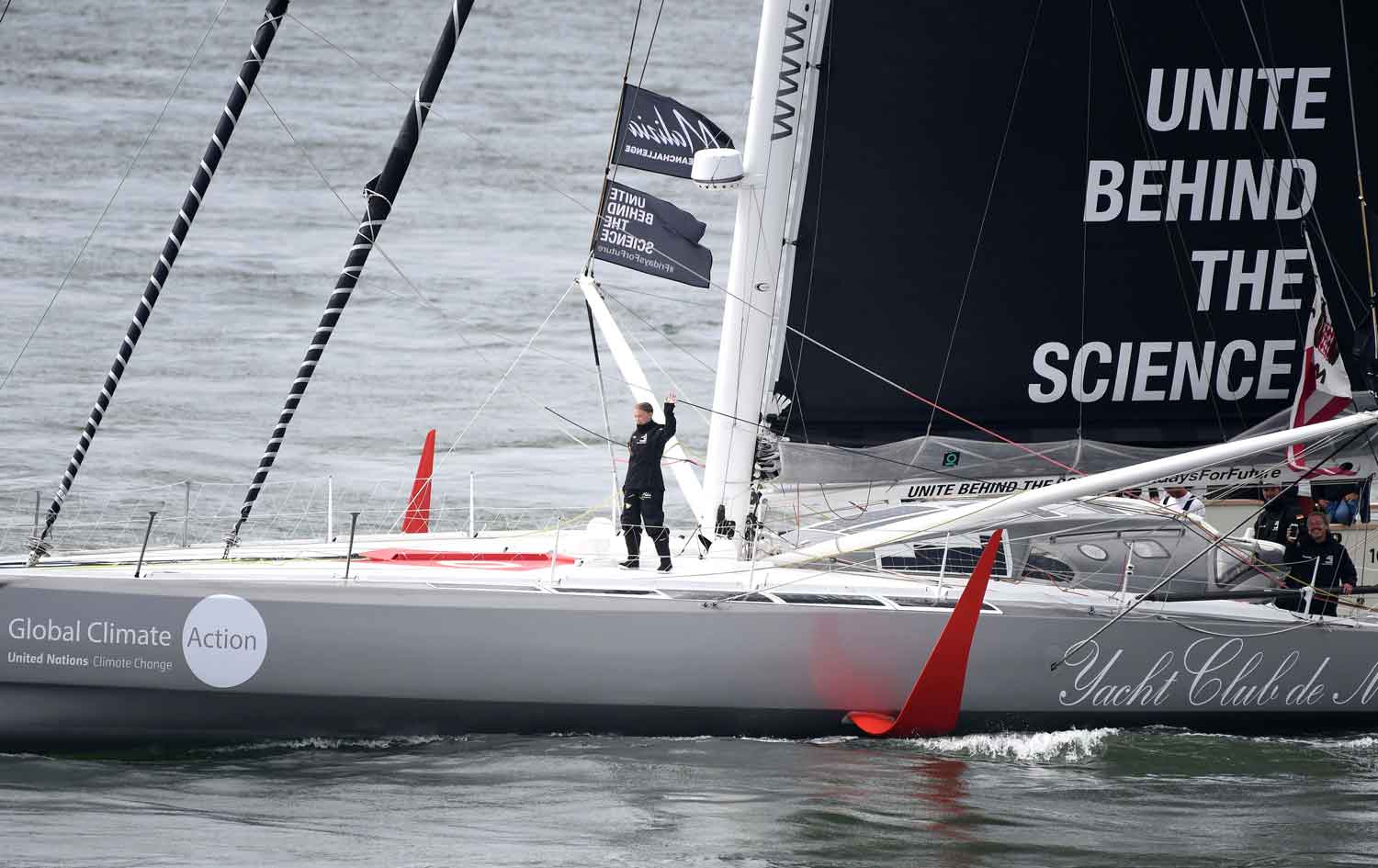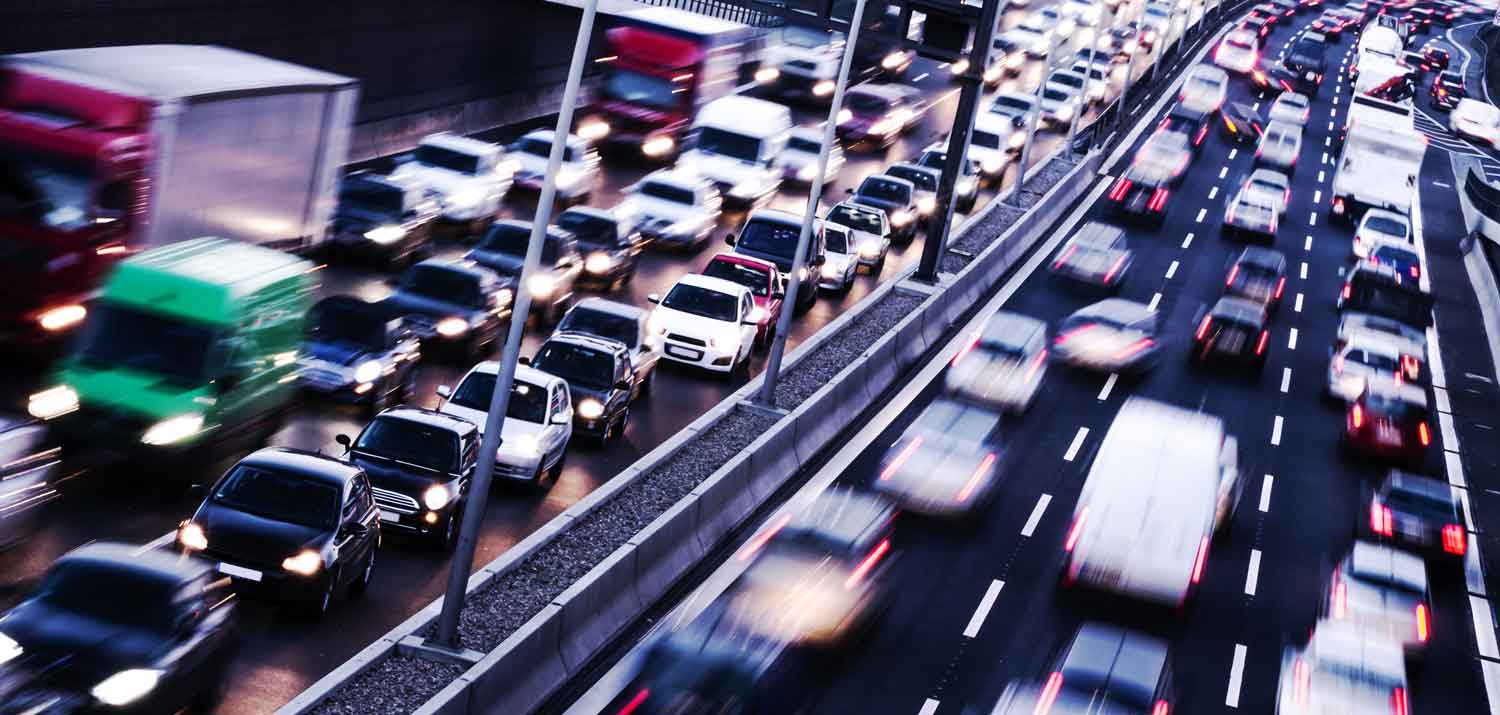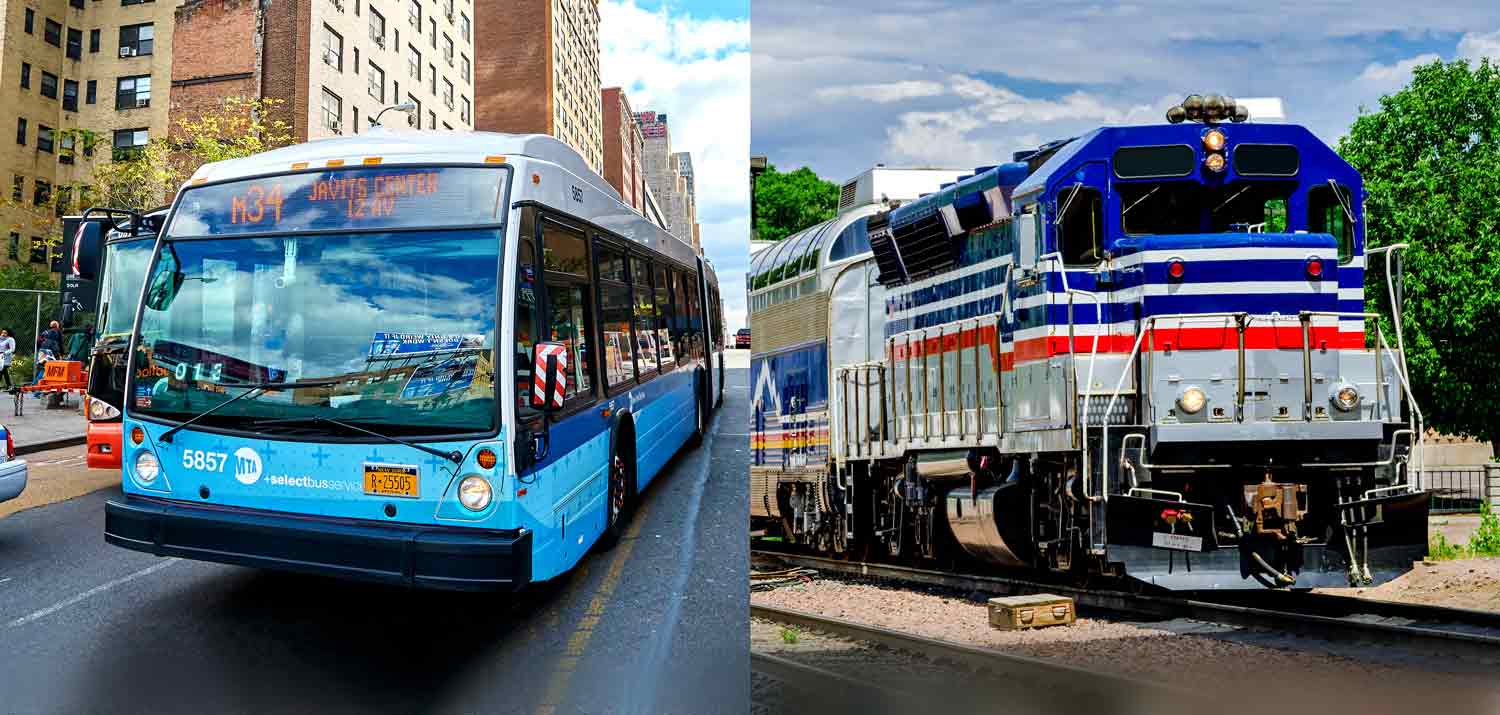The Future of Flight?
For the first time, a commercial jetliner flew across the Atlantic Ocean without using fossil fuels.

Virgin Atlantic
Richard Branson (second from left) and members of his team celebrate after flying across the Atlantic without the use of fossil fuels.
A commercial jetliner completed a flight from London, England, to New York City powered only by sustainable jet fuel. Instead of fossil fuels, the Virgin Atlantic Boeing 787 plane ran on a sustainable aviation fuel (SAF) consisting mostly of cooking oil, animal fat, and synthetic kerosene made from corn. Other planes have crossed the Atlantic Ocean without fossil fuels, but this was the first time a commercial jet made the journey.
“The world will always assume something can’t be done, until you do it,” Richard Branson, founder of the Virgin Group, wrote on his Facebook page. Branson was on board the flight, dubbed “Flight100,” along with scientists, engineers, and journalists. There were no paying passengers.
Virgin Atlantic
Aviation accounts for between 2 and 3 percent of carbon dioxide emissions worldwide, due to the use of fossil fuels. Branson said the flight was a step toward using only SAF to fuel commercial planes so that air travel will no longer be a major contributor to climate change. The governments of both the United States and the United Kingdom have announced their intention to greatly increase their production of SAF with an aim toward curbing the use of fossil fuels. But environmentalists have their doubts.
Currently, commercial airplanes blend a small amount of SAF in with their traditional jet fuel—a very small amount. According to the U.S. Government Accountability Office, SAF made up less than 0.1 percent of the jet fuel used by major U.S. airlines in 2022. The supply of SAF is increasing, but progress is slow—partly because SAF is expensive to produce. Environmentalists say it’s misleading to claim that commercial aviation is on the verge of becoming environmentally responsible.
“The idea that this flight somehow gets us closer to guilt-free flying is a joke,” Cait Hewitt, policy director of the group Aviation Environment Federation, told reporters. “Hopefully, we’ll have better technological solutions in [the] future but, for now, the only way to cut CO2 from aviation is to fly less.”
But Branson says the recent flight is a good sign.
“It’s going to take a while before we can get enough fuel where everybody’s going to be able to fly. But you’ve got to start somewhere,” he told Reuters.





